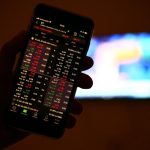Risk Management in Automated Trading
Table of Contents
Did you know that it’s possible to automatically manage the risk of losses in stock or forex trading?
Automatic risk management was once merely a dream, but now financial professionals automate how they manage their risk through automated trading, facilitated by artificial intelligence (AI) and Machine Learning. And you, too, can do the same.
But first, what’s risk management, and why is it important in trading?
Risk Management and its Role in Trading
Risk management in trading is crucial for mitigating the potential losses that arise from market trades. It involves identifying, evaluating, and mitigating risks as the market moves against expectations.
Setting expectations based on a thorough market analysis and anticipating all potential risks is vital in managing risk effectively.
One of the key factors in risk management is understanding trends. Trends represent the general direction or momentum of the market, asset prices, or other relevant measures. Investors ‘ risk appetite is a central factor in these trends, which reflects the anticipated risks associated with specific events such as political elections, economic decisions, and technological advancements.
To effectively manage trading risks, it is crucial to identify and evaluate the different variables at play in the market. Economic factors, such as central bank interest rate decisions or trade wars, can significantly impact assets.
Understanding the power of these factors to create price fluctuations and their frequency allows traders to identify potential threats to their portfolios. And by being prepared for risky scenarios, traders can employ strategies like hedging, options investing, and asset diversification to tackle market risks effectively.
Evaluation of Risk in Automated Trading
Evaluating trading risks involves assessing the performance of a portfolio in the market. The two most common methods used for risk evaluation are Alpha and Beta.
Alpha measures an investment’s performance compared to a specific benchmark. A positive alpha indicates outperformance, while a negative alpha suggests underperformance.
Conversely, Beta measures the volatility of a security or a portfolio against the market as a whole. A beta greater than 1 signifies higher volatility, while a beta less than 1 indicates lower volatility.
Understanding these market measures helps traders evaluate and manage the risks associated with their portfolios.
Implementing effective risk management strategies is essential for successful trading while minimizing risks. Here are some popular risk management strategies and elements:
- Portfolio Optimization: This process involves constructing portfolios to maximize expected return while minimizing risk. It utilizes different proportions of investments to achieve the desired risk-return trade-off.
- Hedging: Hedging is an investment strategy to offset potential losses. Traders protect themselves from adverse price movements by using derivatives or other financial instruments.
- 1% and 2% Investing Rules dictate the maximum risk feasible per trade, limiting potential losses. Traders risk no more than 1% or 2% of their capital on a single transaction.
- Monitoring Trades with Advanced Technology: Utilizing algorithmic trading and advanced technologies like neural networks and machine learning allows traders to monitor market changes and make informed investment decisions in real time.
- Avoiding Unclear Trade Setups: Clear trade setups based on reliable indicators are crucial for making informed decisions. Traders should avoid ambiguous or mixed trade setups to minimize risks.
- Stop Loss: Setting stop loss orders helps protect against excessive losses by triggering a buy or sell order when the stock price reaches a specified level.
You can enable these risk management strategies in an automated trading platform. These platforms provide tools and functionalities corresponding to these strategies, hence playing a significant role in effective risk management. The tools enable you to optimize portfolios, execute hedging strategies, and monitor trades using advanced technologies.
This list of automated trading platforms provides a comprehensive guide to the best site available, allowing traders to leverage automation and AI for effective risk management. These platforms offer algorithmic trading, backtesting, and real-time monitoring to enhance risk management practices.
Risk management in automated trading continuously evolves through advancements in AI and technology. These tools have proven instrumental in various aspects such as market data analysis, improving data processing capabilities, recognizing trends, predictive analytics, accurate forecasting, sentiment analysis, and efficient news monitoring. With the aid of AI and technology, risk management in automated trading has become more sophisticated and comprehensive, empowering traders to make informed decisions and mitigate potential risks effectively. As AI progresses, the future of risk management in automated trading holds even greater promise, ushering in enhanced strategies and further refinement of trading algorithms.








